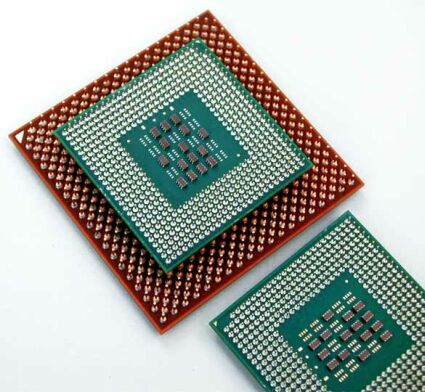The Die Has Been Cast: Pentium 4/2533 vs. Athlon XP 2100+
Joining The Next Round - P4 Gets Yet Another Performance Boost
We can hardly remember it anymore. After its first release in November 2000, Intel's Pentium 4 processor had a rather hard time to win customers and many started wondering if Pentium 4 would turn out to be a failure. Then came the days of the i845 chipset, inviting SDRAM into the domain of Intel's top-notch processor and things improved. The real breakthrough however came with the launch of the Pentium 4 "A", carrying the new "Northwood" core. "Northwood" won the masses. Intel likes it, because it is cheap to produce the new Pentium 4 and because, for the time being, it is able to beat whatever AMD throws at them. Customers like it, because Intel reduced prices, because the new P4 is a no-brainer in terms of installation and maintenance and because its performance is even refreshingly close to Intel's marketing hype.
Today, the times for AMD's AthlonXP have just got another bit harder. AMD's current flagship CPU did not have too much fun lately, even though it still provides by far the best bang for the buck and quite a big bang at that. First AMD invented the Athlon XP model rating against the clock speed lead of Intel's Pentium 4 processor. While Pentium 4 is utterly unable to do as much "work" as AMD's Athlon XP per clock cycle, it still can boost the higher MHz or rather GHz number, which is what sells processors and systems to the not so computer literate majority out there. The press did not welcome the model rating, but it still worked out well, saving AthlonXP's honor. However, then Intel came with "Northwood" and Pentium 4 suddenly got faster, smaller, cooler and ... can you believe it? ... cheaper!
Already now, Intel is supplying Pentium 4 at up to 2.4 GHz, while the highest ranking Athlon XP only comes with the model number "2100+". Still, this Athlon XP is impressively close to Intel's P4-flagship. Now Intel finally decided to pull away with the introduction of the "533 MHz'" processor bus or "Front Side Bus" and a Pentium 4 at 2533 MHz that uses it.
It wouldn't be an Intel launch if there weren't some irritating quirks coming along with it. We'll tell you all about it.
Get Tom's Hardware's best news and in-depth reviews, straight to your inbox.
Current page: Joining The Next Round - P4 Gets Yet Another Performance Boost
Next Page Old Chipset, New Label: Intel 850E
